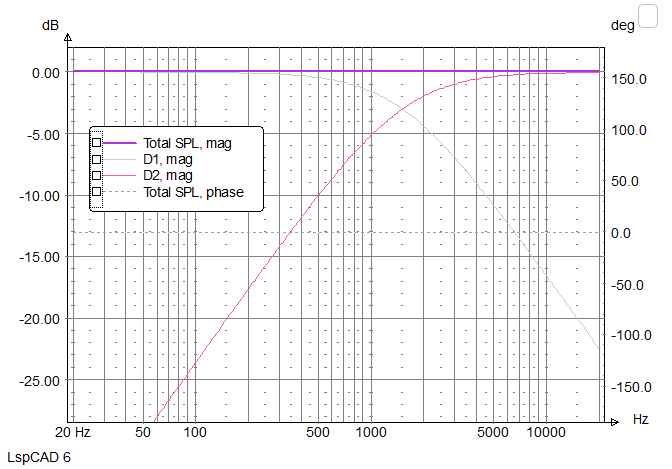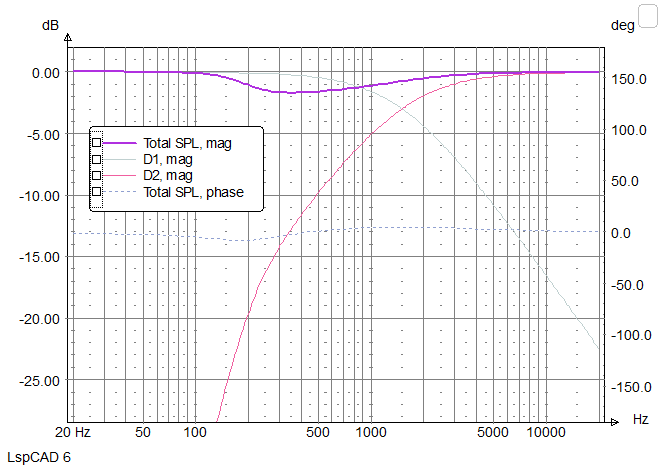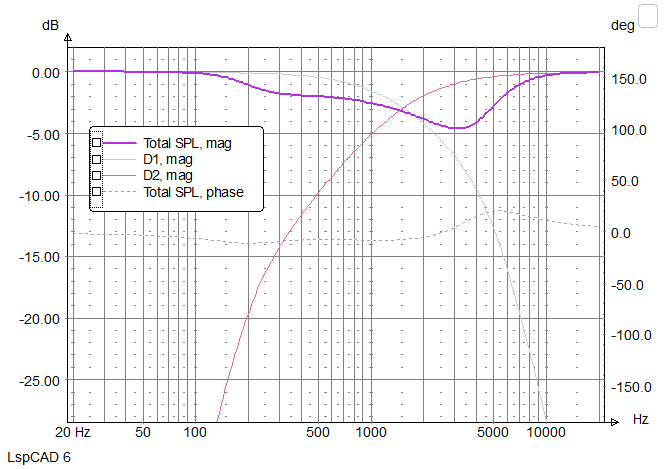Is it possible to make a first-order crossover in a real-world situation?
in the last article, I explained how to adjust the distance of drivers for best integration. But what happens if a real-world driver comes into place. Every driver has a bandpass behavior. It falls down at low frequencies with 12dB and at higher frequencies with 12dB or even more. But let’s assume, it’s 12dB.
Here again the ideal situation of a pure 6dB filter:

The tweeter in our sample box uses a BMR driver. It sits in its own enclosure and has a resonance frequency of 200Hz with a Q of around 0.8. So it drops off with 12dB per octave below 200Hz. Adding this to our simulation looks like this:

Unfortunately, this additional filter far below the crossover frequency ruins the response curve already. But also the woofer rolls off at 5kHz and so a second-order filter at 5kHz gets added to the woofer.

That disturbs the response curve even more – and this speaker is on the theoretical perfect “position” . How about the group-dealy? It this still as good as before?

Unfortunately, it is not. However, the curve is not so bad and the delay max. 0.15mS.
Conclusion:
The theoretical advantages of a first-order crossover are not really working without drivers that got extremely wide bandwidth. Wore work to be done!
